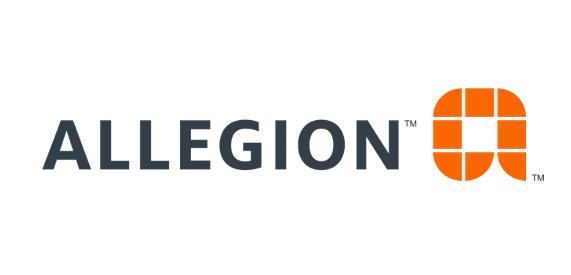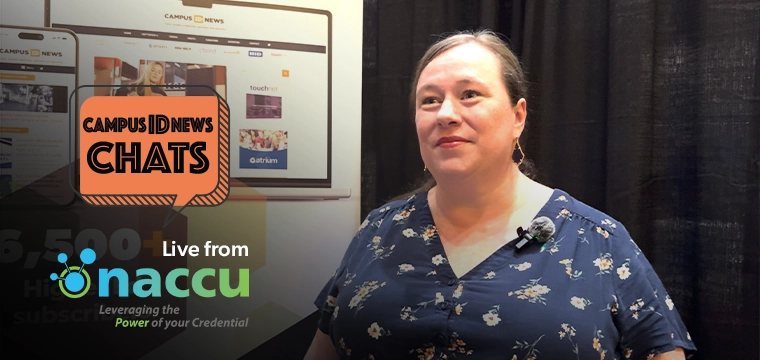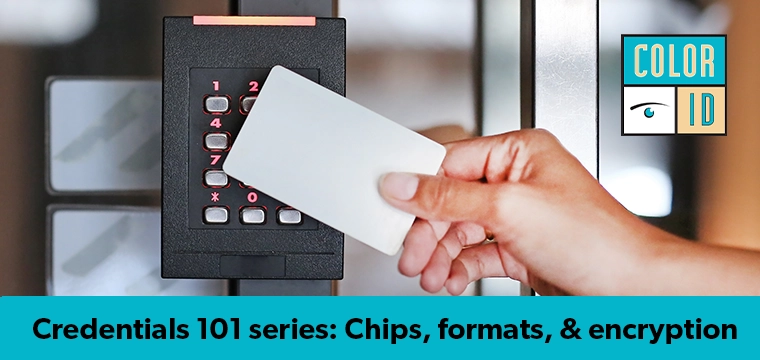
 By Jeff Koziol, Allegion’s business development manager of campus software partners
By Jeff Koziol, Allegion’s business development manager of campus software partners
2020… What a year it has been. December is the time of year when we start discussing what the next year will bring. While we’re all excited to close the door on the last several months and look ahead to 2021, I know that there’s also a lot of uncertainty in our future. That said, I am hopeful. I think we will learn from this year and evolve to create better, safer campuses for students, faculty and staff.
Of course, technology and innovation doesn’t stop. Even during the pandemic, new software was introduced to help with contact tracing while access had to be reimagined all over campus. Here’s a glimpse at a few trends that I think we can expect in 2021 and beyond.
I’m sure it doesn’t surprise you that mobile will continue to be a hot topic in 2021. I anticipate that we will continue to see adoption for improved convenience, efficiency and security. Leveraging NFC technology gives users a more seamless experience from access and transactions, to distribution and management.
Enhanced security is a significant benefit of upgrading to mobile credentials, especially for those still using unencrypted technology. In fact, Mark McKenna, director of the CATcard Service Center at University of Vermont, shared during a webinar that the main reason his team converted to mobile credentials was to eliminate the use of mag stripe on campus for more secure transactions.
Mobile credentials themselves are more secure than older technology like magnetic stripe or proximity cards. On top of that you have the fact it’s on the student’s smartphone. When was the last time you saw a young adult go anywhere or do anything without their device? They’re less likely to loan it out or lose it. And if they do lose it, I’d give it less than an hour before they notice and lock the device or locate it.
Colleges and universities understand the value of mobile credentials, and I anticipate more will move from discussions to adoption in the coming year or two. And soon the Android solution for the Google Wallet will be available and will only help to further advance the adoption.
"Colleges and universities understand the value of mobile credentials, and I anticipate more will move from discussions to adoption in the coming year or two."
Doug Vanderpoel, manager of enterprise services at Mount Holyoke College, also sees a bright future for mobile adoption. “One of the things that excites me most about the future of credentialing is not just mobile itself but the possibilities it opens up, like geo location and geo marketing. Apps and the credentials will merge. A class schedule will be able to guide a student to her classroom, while the credential lets her in the door.”
Another benefit of mobile technology is that credentials are remotely deployed. It’s easier for your staff and it eliminates the need for students to pick up cards in person. Given the risks, your institution doesn’t want students lining up, risking students and staff.
Similarly, mobile is contactless, which is a hot topic when considering the overall health of a campus. The less students, faculty and staff are touching, the better.
Interoperability enables various technology systems to communicate, exchange and interpret information. With campus cards, interoperability enables a credential to work across multiple hardware manufacturers spanning access control, point of sale and other third-party applications.
Today, open interoperable solutions are optimal to the dated proprietary model that has long existed in the industry. When I look in my crystal ball to predict the future, I see universities taking a more active role in their technology choices. That starts with considering manufacturing partners who embrace open, non-proprietary flexible solutions.
“In North America, high frequency, or smart card technology, has long been dominated by a proprietary encryption key technology and business model,” says Paul Iverson, credential solutions business leader at Allegion. “As the industry evolves to non-proprietary and open architecture solutions and partnerships, end users are beginning to evaluate the dated proprietary model, which creates leverage and control for the manufacturer.”
"I see universities taking a more active role in their technology choices. That starts with considering manufacturing partners who embrace open, non-proprietary flexible solutions."
While some campuses might have hardware from a single manufacturer on campus, it’s more common that there is a mix, creating a more complex medley of credentials, readers and electronic locks. These solutions need to work together harmoniously, where the credential can open every door and interface with other readers for dining, bookstore purchases, laundry, vending and other applications on campus, regardless of where the lock or reader came from.
Manufacturers aligned with partners like NXP embrace the scenario described above utilizing custom encryption keys. Custom encryption keys are secure and create control for the university rather than the manufacturer. Should the end user’s technology or strategic needs change, they enjoy the flexibility of taking possession of the key at any time and can seek additional manufacturing relationships to serve their technology and business needs.
“There’s a choice of manufacturers in the market,” says Iverson. “Some use a proprietary model creating manufacturer control in the relationship while others embrace non-proprietary models and the new paradigm of the future.”
“I encourage you to ask the manufacturer, ‘If at any time I elect to take possession of the key, will you provide the key to us?’ If the answer is ‘yes,’ it sounds like you’re working with a manufacturer offering a non-proprietary custom key as an option,” Iverson says. “If the answer is ‘no,’ you’re likely working with a manufacturer aligned with a proprietary encryption key offering. This can limit your freedom to choose hardware manufacturers down the road.”
Invest in the freedom of choice and put control in your hands. Ask questions and choose wisely so you don’t box yourself in.
Now more than ever, it’s important to focus on the student experience. Colleges want students back on campus, and they want them to choose their campus. Entice students with your offering and stand out.
What value does your campus bring to the student? How can you reassure parents’ safety and security concerns? Your campus card could be the answer.
If you’re going to market your campus card as a perk for students, it’s important to ensure it really is going above and beyond. This doesn’t mean you have to have mobile, though students are going to start expecting that in the coming years. Start by expanding your campus card capabilities.
“Students are the reason we’re here. They’ve been using mobile devices from a young age and we need to keep up with the technology that their expecting.”
--Doug Vanderpoel, manager of enterprise services at Mount Holyoke College
When universities move to smart card solutions, regardless of provider, they often stop at access control. They tend to overlook things like vending, dining and POS readers. When the mobile student IDs in the Apple Wallet came around, universities were forced to address all areas where cards were being used. Now we’ve seen universities expand the use case, even those not using the Apple solution. They want their contactless card to go beyond door access; they want it for transactions and more.
While you can still attract students with a full-service campus card, I wouldn’t completely overlook mobile. Students will start to expect this option in the future. We’ve had an evolution over last 20 years moving from key rings to plastic ID cards. Now we’re seeing a similar migration away from the traditional wallet with credit cards, membership cards and now keys all moving to the digital wallet.
“Students are the reason we’re here,” insists Mount Holyoke’s, Vanderpoel. “They’ve been using mobile devices from a young age and we need to keep up with the technology that their expecting.”
Technological advancement isn’t a trend as it’s constantly evolving to further our industry. That said, I think it’s worth noting a few ways that technology will impact higher education institutions in 2021 and beyond.
In 2020, campuses were able to use credentials to provide in-demand services to deal with the pandemic, like contact tracing. Moving forward, universities can benefit from using that same data for capacity management and situational awareness.
While it all centers around the credential, a higher adoption of readers and wireless locks will increase the amount of data that a campus can access to better implement these capabilities. It becomes more valuable because it’s being used in more places.
"In 2020, campuses used credentials to provide in-demand services to deal with the pandemic, like contact tracing. Moving forward, universities can use that same data for capacity management and situational awareness."
Of course, when gathering data, the quality of that data matters. When using a card technology that can be easily duplicated, that data suffers. You don’t want someone to be able to take a card to a Key Me station and duplicate it, so it’s important to have encrypted technology in place first.
Cyber security and privacy concerns have been in the spotlight this year, and I don’t anticipate that will change in 2021. At Allegion, we have teams dedicated to addressing both topics. Looking beyond 2021, I see a lot of opportunity for our market. One example of this is the emergence of Ultra-Wideband (UWB).
“We’ve already seen how NFC and BLE have made access control more seamless through mobile devices,” says Brian Marris, product manager of Allegion connected accessories. “In the next five years, UWB will take this to the next level.”
“Location precision is improved, and it will recognize intent in a way that isn’t possible today.” Adds Marris. “Say I have my phone in my pocket and I’m approaching a door. UWB is tracking me within a few inches, and it knows by the way I’m facing and when I’m within a certain range that my intent is to walk through that door. It then authenticates my credential without me having to take it out of my pocket.”
While 2020 wasn’t the year we expected, I believe this is an exciting time for our industry. We learned a lot this year. For example, I bet pandemic planning is going to be key for universities, even after there is a vaccine. Campuses have done a good with their strategies to keep students safe on campus. And now they’re going to be prepared for health-related emergencies moving forward.
We’ve also seen technology help us in ways we might have overlooked in the past, like remote deployment and contact tracing. I think this innovative spirit will continue across our industry as we strive to design better campus experiences. More schools will introduce mobile credentials, while others expand the capabilities of their current technology.
When you look to the future, what do you see? Let me know by connecting with me on LinkedIn.




